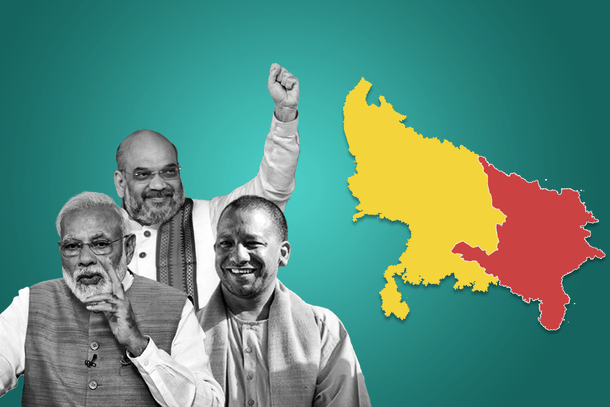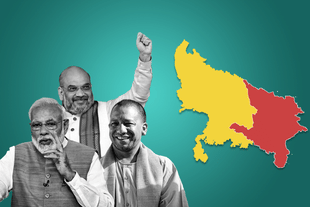Uttar Pradesh
Did Dalit Votes Really Ditch BJP In Hordes In Uttar Pradesh? More Evidence Needed
Nishtha Anushree
Jun 05, 2024, 07:31 PM | Updated Jun 06, 2024, 08:48 PM IST
Save & read from anywhere!
Bookmark stories for easy access on any device or the Swarajya app.


The Bharatiya Janata Party's (BJP) unexpectedly bad performance in Uttar Pradesh in the Lok Sabha elections is compelling political observers to explore what went wrong.
Amid such analysis, a claim has emerged that the Dalit voters have taken back the support extended to the BJP, leading to its losses in the state.
However, Swarajya finds no reason to believe this claim as of yet.
Let's start by having a look at the 17 Scheduled Caste (SC)-reserved seats in UP.
While the Samajwadi Party (SP) won more seats than the BJP in UP, the latter won 1.5 times more SC-reserved seats than the former in the state.
As per the final tally, the SP won 37 seats in UP and the BJP 33. But when it comes to the 17 SC-reserved seats in the state, nine were won by the BJP and six by the SP.
The two others were won by Chandrashekhar Ravan's Aazad Samaj Party (Kanshi Ram) and Congress, one each.
If one believes that the Dalit factor is behind the six SC-reserved seats won by the SP, then a closer look might help. All these constituencies might have been affected by the anti-incumbency factor.
Of the six seats that SP won, four had an incumbent BJP MP, while BJP-ally Apna Dal (Soneylal) and Bahujan Samaj Party (BSP) had MPs in one seat each.
Jalaun and Kaushambi had a two-time incumbent BJP MP and Etawah and Machhlishahr had a BJP MP who won in 2019.
In fact, Hathras, an SC reserved constituency, saw the victory of a BJP candidate with a margin of more than 2.4 lakh votes. Hathras is the same place where a Dalit woman was raped and killed in 2020. The state administration's handling of the aftermath came under intense criticism and Hathras was a site competitive politics for many weeks in 2020.
Something similar played out in Agra, to the south of Hathras and another reserved seat. Here, BJP candidate SP Singh Baghel defeated his rival by a margin of more than 2.7 lakh votes.
The other factor to be considered here is the votes that went to the BSP, which is known to be a party of Dalits and gets a substantial amount of Jatav votes.
If there was indeed a Dalit anger against the BJP, the BSP's traditional voters would have voted for the INDI Alliance since it was the INDI group that was best placed to defeat the BJP-led National Democratic Alliance (NDA).
However, we find that BSP was able to preserve its voter base to an extent. It got 12.88 per cent votes in the 2022 UP Assembly elections and has got 9.39 per cent votes this time, 3.5 per cent points lower but no more.
BSP's vote share is almost equal to what the Congress got -- 9.46 per cent. However, the Congress managed to win six seats in the state because it contested only 17 seats and hence its votes got concentrated, while the BSP won none.
Despite not winning any seat, the BSP made its mark as there are 47 seats where the Mayawati-led party got more votes than the margin of victory. Its absence or alliance with any of the two blocs could have completely changed the results.
Most of such seats went in the favour of the INDI Alliance. The INDI Alliance won 31 of these 47 seats, while the NDA won only 16 of these seats (almost half of the INDI Alliance).
This means that an alliance of the BJP with the Mayawati-led BSP would have proven beneficial to the saffron party if a substantial amount of vote transfer could have been achieved between the two parties.
However, Mayawati decided to contest alone and the BJP came down to its worst tally in UP since 2014.
Despite that, there is yet no reason to believe that the Dalit vote ditched the BJP en-block in Uttar Pradesh.
Nishtha Anushree is Senior Sub-editor at Swarajya. She tweets at @nishthaanushree.





